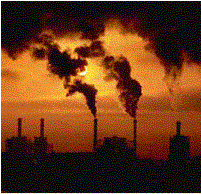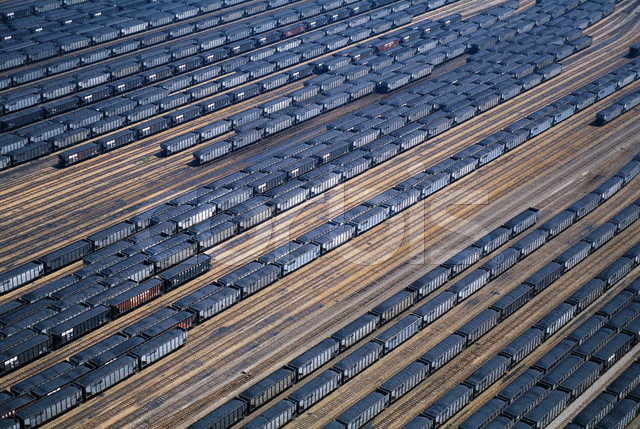Coal-Fired Power Plants to Face Choice: Scrub It or Shut It
And Supreme Court decision says it might look favorably on coming EPA rules May 27 2014Otherwise stymied by a Congress that declines to act, President Obama said in June of last year that he would deploy every tool in the executive branch’s authority to reduce power plant emissions. Announcement of the rules that the Environmental Protection Agency has long been toiling to develop is imminent.
The agency had the difficult job of concocting just the right recipe between not too fiery and not too bland. Too mild, in the hopes of avoiding legal 
challenges, and the regulations will do little good. Too harsh runs the risk that the cost of retro-fitting “scrubbers” to old coal-burning plants will cause utilities simply to shutter them, with the risk of the nation generating too little power, leading to blackouts in peak-use periods.
Accordingly, the EPA is expected to offer a menu of choices to the states. They will be responsible for enacting the changes owing to EPA basing its actions on a section of the Clean Air Act that hands enforcement to states. Following the recommendation of the Natural Resources Defense Council that each state should be free to develop its own plan, EPA chief Gina McCarthy has said that states should follow ways “that make sense for them”. China is polluting our West: May 15: We buy their goods and China sends to our western states the pollution of the plants that manufacture them, says a report from the National Academy of Sciences.
That means permitted compliance measures will go beyond power plant fixes to likely embrace a mix of wind, solar, efficiency measures and even state or regional markets for trading pollution permits commonly called “cap-and-trade” such as the program already in use in ever-pioneering California.
Whatever the EPA comes up with, years of law suits will follow, brought
by the states and industry. As a way to thwart the EPA they may challenge that very flexibility that the agency may offer to states. There's the question, for example, whether the EPA is limited only to prescribing technological fixes and has no authority to allow schemes such as cap-and-trade as remedies. Republicans and Democrats alike, who come from either those states that mine coal or still have coal-fired plants, will protest the
Coal trains form up in the giant western yards
rules. The standard Republican position is aligned with industry and warns that energy costs will rise to harm the poor and middle class. They call the government’s campaign a “war on coal” and a “job-killer”. Those claims assume, however, that the prevalent industry reaction will be to shut down coal-burning plants rather than retrofit (which would create jobs). Which way the power industry chooses to respond is yet to be known.
Challenges will come from the states most affected, such as Ohio, with 78% of its power coming from burning coal, and Indiana (83%) and Kentucky (93%). A group of twelve states in the Supreme Court case filed a brief calling the EPA's permit rule "one of the most brazen power grabs ever attempted by an administrative agency". The American Energy Alliance, partly funded by Koch Industries, owned by the billionaire brothers Charles and David Koch, intends to roll out attack ads for television and radio when the EPA issues the rules for existing power plants.
courts support clean-up
Obama's plan got major assists from a cascade of court decisions in April.
The Supreme Court ruled 6-2 that the Environmental Protection Agency can impose its Cross-State Air Pollution Rule on 28 Midwestern 
and Appalachian states whose energy industry fouls the air of downwind Northeastern states.
Eastern states have long been subjected to stricter rules brought about by pollution riding in on the winds from states further west. Those states have lenient rules because they are cleansed by those same prevailing winds from the west that send soot and carbon east. East Coast states have been angered for years at neighboring states for continuing to foul the air they breath.
Just prior to the Supreme Court decision, the U.S. Court of Appeals for the District of Columbia Circuit upheld the nation’s new standards curtailing emissions of mercury and other pollutants. And a federal district court ordered the EPA to come up with a nationwide regulation to rein in smog caused by coal-fired power plants and other sources.
Yet another case before the Supreme Court, involving pollution-control requirements for refineries, steel mills, chemical and cement plants when they undergo expansion, awaits decision in June.
global warming? Yes, but…
Just as the Affordable Care Act is a culmination of decades-long government aspirations to impose a healthcare system on the United States, whatever the EPA announces in June will culminate a decades-long battle to get the power industry to clean up its act. Certainly, the President will count the EPA restrictions as adding to his scorecard in combatting global warming. That scorecard already boasts auto emission standards required to raise efficiency to 54.5 miles per gallon by 2025, as well as standards for trucks and buses. A year ago at Georgetown University he said, “I refuse to condemn your generation and future generations to a planet that’s beyond fixing.” Plus, he signed a United Nations accord pledging that the United States will cut its greenhouse gas emissions 17% from 2005 levels by 2020 and 83% by 2050. “There is simply no way to hit those targets...other than by going after cars and coal.”
It is incorrect, though, to view measures to clamp down on power plant emissions as simply an Obama pet project targeting climate change. It is a struggle that dates from before climate became a major concern. The issue has always been health. For decades the power industry has been free to pollute the atmosphere at little penalty whereas the EPA estimates — in what Justice Ruth Bader Ginsburg called a "voluminous record" of thousands of correlations between upwind emissions and downwind effects — that the Cross-State Air Pollution Rule would prevent up to “34,000 premature deaths, 15,000 nonfatal heart attacks, 19,000 cases of acute bronchitis, 400,000 cases of aggravated asthma and 1.8 million sick days a year”.
long time comingThe Clean Air Act was signed into law by Richard Nixon forty-four years ago. Industry has been fighting it ever since. Soon after enactment, its rules for energy companies were relaxed, requiring them to retrofit their plants with pollution controls only when significant modifications beyond “routine maintenance” were made. That was in deference to the great expense that immediate and unconditional replacement would have caused.
But the industry chafed under even this accommodation, referred to as “New Source Review”, often disguising major construction as “routine” so as to evade installing pollution control scrubbers. The Reagan administration was averse to regulation enforcement, so only in the Clinton years did the EPA take action against the industry’s subterfuge. It initiated investigations that led to lawsuits against 51 power plants for violating the Clean Air Act.
When George W. Bush took office, Vice President Dick Cheney huddled with energy executives in a secret meeting (that excluded any environmental representatives) to set energy policy. One outcome was that the lawsuits were dropped. Another was relaxation of sulfur dioxide and nitrogen oxide rules (doing so was called by the courts in 2008 to be a violation of the Clean Air Act). The energy companies had been some of the biggest Bush campaign contributors.
Stated simply, a large swath of the energy industry has successfully fought off the cost of installing pollution controls for decades to the detriment of the environment and public health. To dispute that, one would have to argue that coal is a clean fuel.
scopeThe long march to curb power plant pollution gets little public notice. Instead, it is the enduring grassroots campaign against the Keystone XL pipeline that grabs the headlines; it has become a symbol, the fork that will say which road the the U.S. will take regarding global warming. But despite NASA’s James Hansen saying that the burning of all of the Alberta tar sands will be “game over” in the climate change battle, the quantity of dirty oil moving through the pipeline doesn’t measure up compared to what EPA regulations could accomplish.
A New York Times energy report said the pipeline would add “18.7 million more metric tons of carbon to the atmosphere annually than would be produced by conventional oil”. In contrast, given that almost 40% of American electricity production is by coal-fired power plants, the coming EPA rules could — depending on their stringency — erase from the atmosphere 200 to 500 metric tons of carbon pollution annually. Add to that the auto standards of Obama’s first term, which are slated to cut about 180 million tons of carbon a year by 2020, rising to 580 million tons by 2030 says the EPA. And then there is the reduction of 350 million tons of carbon that building and appliance efficiency regulations account for. The real game changer could be the EPA’s next step.
but then there’s chinaBeyond cleaner air and less health problems, what good does all this do? Coal is expected to top oil as the world’s dominant fuel source as early as 2020 thanks to China, which will provide two-thirds of the growth in global usage. With the boom in natural gas eating away at its domestic business and new power generation restrictions on the way, American coal operators will help make that happen. Exporters want to build four new terminals — two each in Washington and Oregon — to ship 130 million tons of coal a year to China and elsewhere. Mined in the Powder River Basin in Montana and Wyoming, the source of more than 40% of America’s coal, the companies extract that coal from federal lands for which the government charges less than market rates — that is, to the extent that it collects at all. We will find ourselves subsidizing China. The coastal states are aghast at the prospect of 18 lumbering trains a day chugging through their state to just the largest facility, the planned Gateway Pacific Terminal at Cherry Point. We may stem burning it here but they'll burn it there.
Even so, not until the United States undertakes serious policy measures to cut back pollution at home can we begin to preach to the rest of the world to do the same.
Please subscribe if you haven't, or post a comment below about this article, or
click here to go to our front page.

